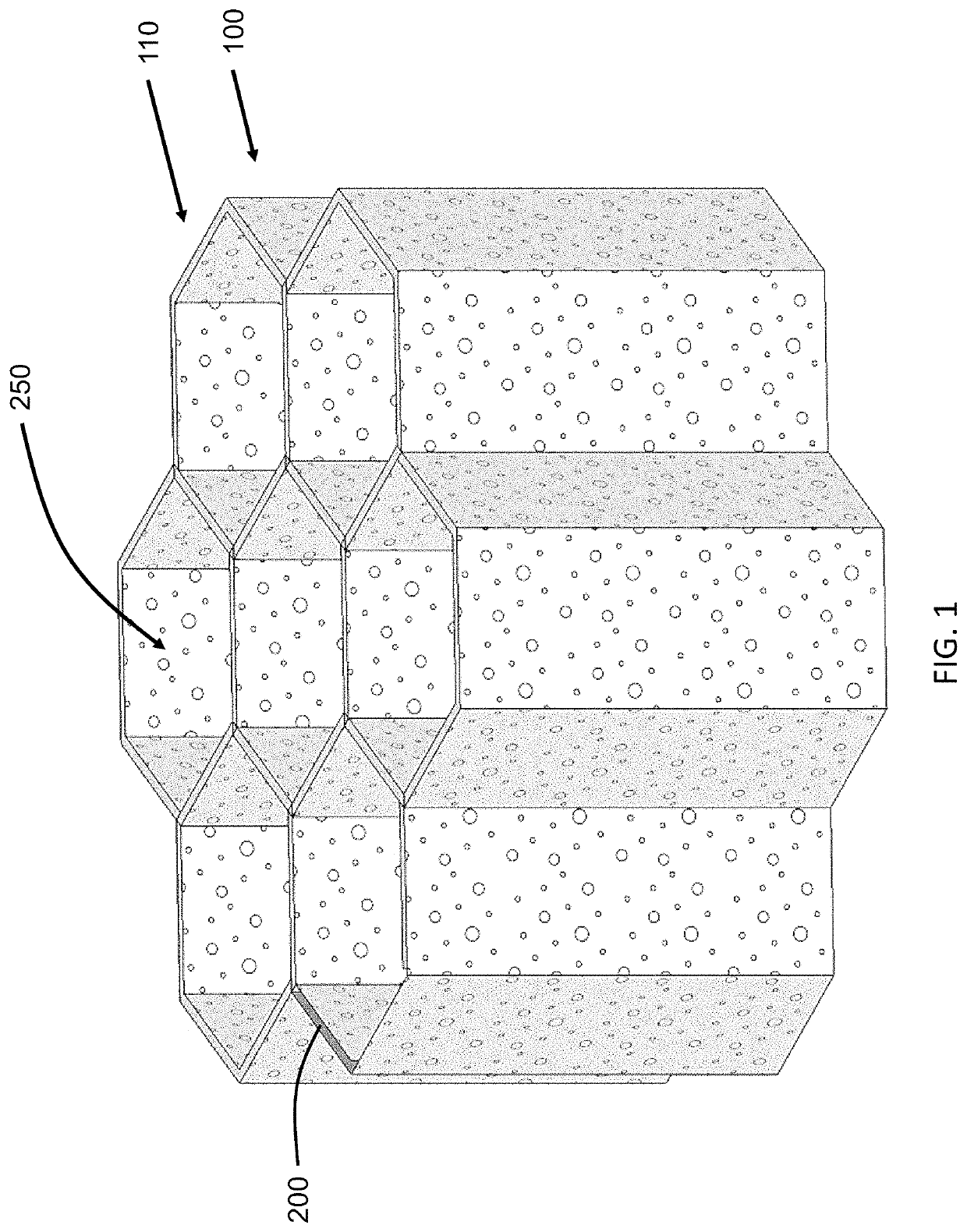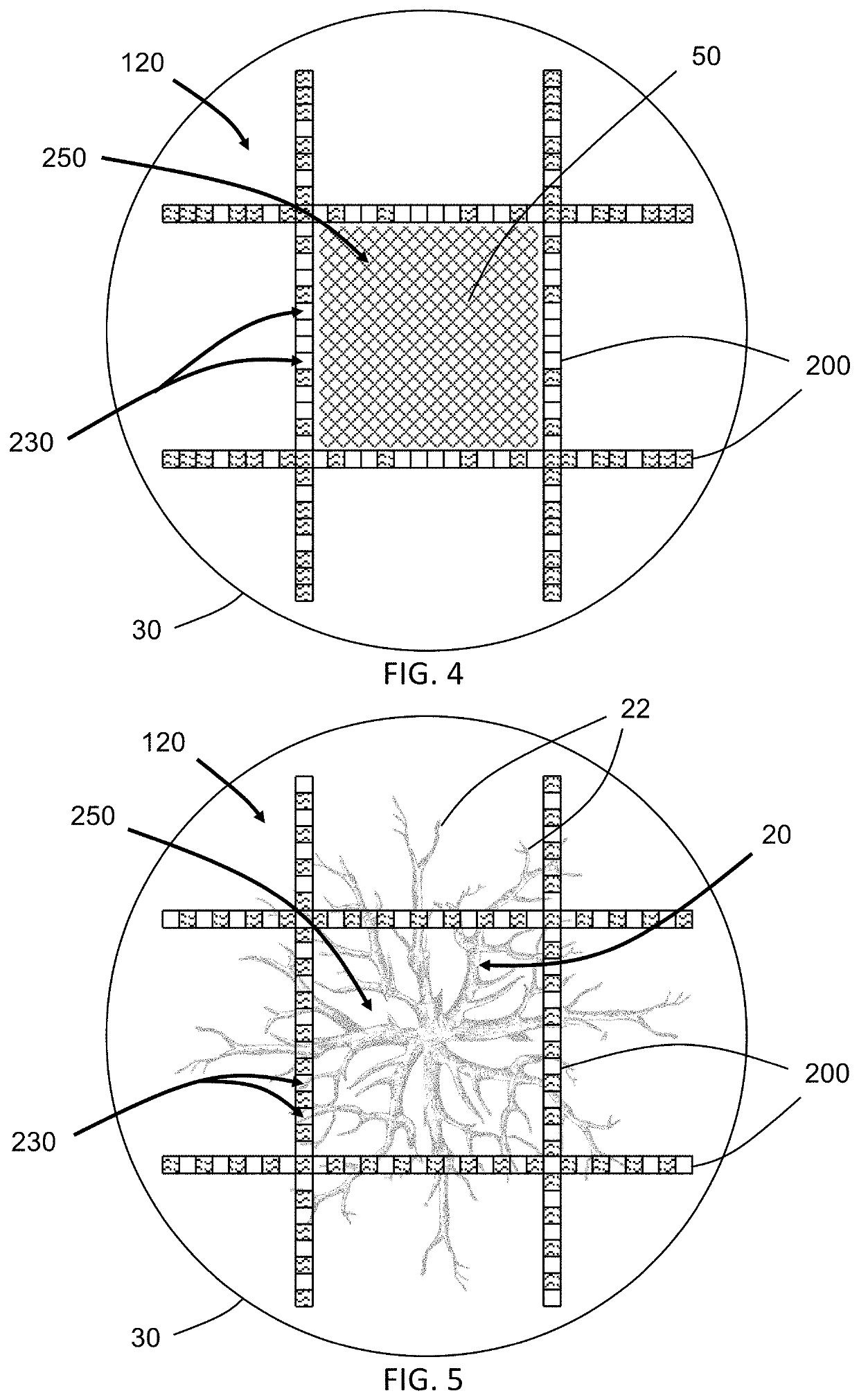The Gro Pro®
Plant Warrior™ pot is the only known alternative container that manipulates the internal volume of a plant container; however, this design reduces the internal volume of the container by modifying the bottom so that it is concave inward instead of flat.
The patent pending cone technology design “allows
oxygen to be drawn through the bottom of the container promoting healthier, stronger roots.” The cone technology design is inefficient at increasing
aeration in plant containers because it is limited to utilizing
atmospheric oxygen strictly from the bottom of the container.
In addition, the cone technology design is limited in
spatial extent and only extends into a small fraction of the bottom central portion of the container, thereby providing no mechanism to promote air circulation throughout the entire internal volume of the container.
Neither of these container inserts have structures or features that extend into the internal volume of the raised-bottom container, thus providing no mechanism to improve aeration or drainage within the
plant root zone and / or the
root ball.
Decreasing the depth of the growing medium will result in less gravitational drainage of water and will not improve drainage of the growing medium as these designs claim.
Circling and kinked roots do not
branch effectively after transplant from one plant container to another or when planted in the ground.
Circling and kinked roots are less efficient at absorbing water and nutrients compared to a more
fibrous root system with better vertical and
lateral root development.
Root systems grown in plant containers do not effectively utilize the container volume because there are no mechanisms to promote root growth in the central portion of the container, which accounts for the majority of the total container volume.
There are alternative designs to traditional plant containers; however, these alternatives focus strictly on redesigning the configuration of the outer circumference of a typical plant container and do not provide mechanisms for increasing root growth in the central portion of the container, where problems of poor drainage and aeration are most severe.
Problems with
standard methods extend beyond plant containers since the majority of plants grown in plant containers will ultimately be planted in the ground (e.g., raised beds, backyards, agricultural systems, urban
landscaping, and
afforestation).
This approach destroys the
soil structure and reduces infiltration, drainage, and aeration within the backfilled area, creating increased transplant stress and a less favorable environment for new root growth and development.
Plant containers, including container inserts, cannot be used to facilitate planting in the ground because these devices cannot be utilized to improve soil structure, infiltration, drainage, or aeration after excavation and backfilling.
The rates of
soil evaporation and
water use by plants in containers or in the ground is highly dynamic and results in the non-uniform distribution of soil
moisture following watering such that the outer circumference of the
root ball dries too rapidly while the center of the
root ball typically remains too wet (in plant containers) or too dry (in the ground).
Although devices exist for enhancing aeration and drainage in plant containers, the prior art does not include either methods or devices that increase aeration and drainage in the growing medium while also providing an additional
water supply for the plant to utilize.
Traditional
potting and planting methods do not allow for optimized root-to-nutrient contact, making plant fertilization inefficient.
However, these methods result in low root-to-nutrient contact causing increased
nutrient loss and potential nutrient deficiencies in plants, especially for low
solubility nutrients such as phosphorous, iron, and
zinc.
Although this method of fertilizer application offers some advantages over traditional methods including increased
longevity in the soil environment and less
nutrient loss due to leaching and
surface runoff, there are several potential problems associated with the use of micro-pore fertilizer packets.
These problems include: (i) low root-to-nutrient contact throughout the plant
root system; (ii) the need to dig and place up to 18 Nutri-Pak® fertilizer packets around a single large plant or tree to provide adequate nutrients, a process that must be repeated once every one to three years; (iii) the potential to damage plant roots when digging and burying the micro-pore fertilizer packets; and (iv) excessive soil disturbance around targeted plants (e.g., method requires the application of more than 100 2 oz. micro-pore fertilizer packets to satisfy the nutrient requirement throughout the life-span of a large individual plant or tree).
Granular fertilizer applications can be mixed with the growing medium, placed on top as a dressing, or layered within the growing medium, but these methods do not place the fertilizer in direct contact with the plant roots.
Fertilizer spikes and micro-pore fertilizer packets also result in low root-to-nutrient contact throughout the plant
root system.
The direct application of microbial inoculants to the growing medium is usually ineffective because the fate of microbial populations in soil depends primarily on the environment.
In addition, the use of soil microbial inoculants does not allow for direct point-source application of inoculum to the plant
root system.
Another limitation associated with the use of soil microbial inoculants is that they do not remain in direct contact with the plant root
system following the application.
Furthermore, microbial inoculants that are applied directly to the growing medium typically do not form mature microbial colonies due to one or more limiting physical or chemical properties of the soil environment.
Traditional methods of applying soil microbial inoculants do not allow for the application of mature microbial colonies directly to the soil environment or plant root system.
 Login to View More
Login to View More  Login to View More
Login to View More 


